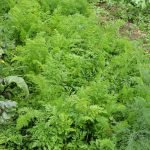Easy Vegetables To Grow In Garden Bed
A vegetable garden is a great way to get fresh produce right from your own backyard. Not only is it a fun hobby, but it can also be a great way to save money on groceries. However, if you’re new to gardening, it can be a little overwhelming trying to decide which vegetables to grow.
If you’re looking for some easy vegetables to grow in your garden bed, here are a few suggestions:
Tomatoes – Tomatoes are one of the easiest vegetables to grow and they’re also one of the most popular. They grow well in most climates and they’re a great source of vitamin C.
Zucchini – Zucchini is another easy vegetable to grow and it’s a great source of dietary fiber and vitamin C. It grows well in most climates and it’s a popular vegetable for summertime barbecues.
Spinach – Spinach is a nutrient-rich vegetable that’s easy to grow. It’s a great source of dietary fiber, vitamin A, and vitamin K. It grows well in most climates.
Peas – Peas are another easy vegetable to grow. They grow well in most climates and they’re a good source of dietary fiber, vitamin C, and vitamin A.
If you’re looking for a complete list of easy vegetables to grow, check out this article from The Spruce.
Plans For A Raised Vegetable Garden Bed
When most people think of vegetable gardens, they think of the traditional in-ground garden. However, there are many advantages to using a raised vegetable garden bed. Not only does a raised garden bed make it easier for you to work the soil, but it can also help you to better control the soil quality and drainage.
If you are thinking about installing a raised vegetable garden bed in your yard, there are a few things that you will need to keep in mind. The first thing to consider is the size of the bed. You will want to make sure that the bed is large enough to accommodate the vegetables that you would like to grow.
The next thing to consider is the type of soil that you will be using in the bed. If you are using soil that is native to your area, you will likely need to amend it to make it more fertile and hospitable for vegetables. You can do this by adding compost or aged manure to the soil.
If you are not using native soil, you will need to purchase a soil mix that is designed for raised beds. This mix will be more fertile and will drain better than native soil.
Once you have decided on the size and type of soil for your raised vegetable garden bed, it is time to start assembling the bed. The easiest way to do this is to use a kit that is designed for raised beds. These kits typically include all of the parts that you will need, including the lumber, screws, and anchors.
If you are not using a kit, you will need to purchase the lumber and hardware that you will need to build the bed. When selecting lumber, you will want to make sure that you choose a type that is resistant to decay. Cedar or redwood are both good choices.
Once you have assembled the bed, it is time to start planting. Be sure to read the instructions that come with your soil mix, as this will tell you how deep to plant your vegetables.
If you follow these simple tips, you will be able to create a beautiful and productive raised vegetable garden bed in your yard.
Preplanned Vegetable Garden Raised Bed
A raised bed vegetable garden is a great way to get started in vegetable gardening. It is also a great way to garden if you have a small amount of space. By creating a raised bed vegetable garden, you are creating a space that is specific for growing vegetables. This means that you can control the soil conditions and the amount of water that the vegetables receive.
When creating a raised bed vegetable garden, there are a few things that you need to keep in mind. The first thing is the size of the raised bed. The raised bed should be large enough to accommodate the vegetables that you want to grow. The other thing to consider is the type of soil that you will be using in the raised bed. You will want to use a soil that is rich in organic matter and that has been amended with compost.
The next step in creating a raised bed vegetable garden is to decide on the type of materials that you will use to construct the raised bed. There are a variety of materials that you can use, including wood, stone, brick, or concrete. The type of material that you choose will depend on the look that you want for your garden and on your budget.
Once you have decided on the size, shape, and materials for your raised bed vegetable garden, it is time to start planting! Be sure to plant a variety of vegetables in your garden, so that you will have a variety of fresh produce to eat throughout the season.
Orientation Of Vegetable Garden Beds
One of the most important decisions you will make when starting a vegetable garden is how to orient the garden beds. The orientation of the beds will affect how easy it is to work the soil, how much sunlight the plants will receive, and how much moisture the soil will retain.
There are a few different options for orienting your garden beds:
1. North-South Orientation
If you are looking for the easiest option, a north-south orientation is the way to go. This orientation allows the sun to hit the plants evenly throughout the day, and it is also the best option for retaining moisture in the soil.
However, a north-south orientation can be difficult to work with if your garden is large, as you will have to walk across the beds to get to the other side.
2. East-West Orientation
An east-west orientation is a good option if you want to maximize sunlight exposure. The plants will receive sun all day long, but the beds will be more difficult to water and will dry out more quickly.
3. Mixed Orientation
If you are short on space, you can use a mixed orientation. This involves combining a north-south and an east-west orientation, so that the plants receive sunlight at different times of the day.
No matter what orientation you choose, make sure the beds are at least 4 feet wide so you have room to work the soil.
Diy Raised Vegetable Garden Bed
Ideas
When it comes to vegetable gardening, there is no one-size-fits-all solution. You might have a small yard with little space to spare, or you might have a large yard with plenty of room to work with. You might also want to consider the amount of sunlight your yard receives, as well as the type of soil you have.
If you’re looking for a way to maximize your vegetable gardening potential, consider using a raised vegetable garden bed. Raised garden beds are elevated structures that allow you to garden in areas that would otherwise be unusable, such as slopes or rocky terrain. They also make it easier to work with poor soil, and they can help to improve drainage.
There are a variety of raised bed designs to choose from, and you can easily create your own with a few basic supplies. If you’re looking for a quick and easy raised bed solution, consider using a few cinder blocks or lumber to create a simple rectangular frame. You can then fill the frame with a mixture of soil and compost, or you can purchase a pre-made raised bed kit.
If you have a bit more time on your hands, you can create a more elaborate raised bed design. This might involve building a frame out of lumber, or it might involve using raised bed liners made from materials such as wire, plastic, or stone. Whatever design you choose, make sure that the bed is at least 12 inches high so that you can easily work with the soil.
When planting in a raised bed, be sure to choose plants that are suited for your climate and soil conditions. If you’re not sure which plants to choose, consult a local garden center or online resource.
A raised vegetable garden bed is a great way to maximize your gardening potential, and it’s a great way to enjoy fresh vegetables all season long.
“

If you’re looking to get into vegetable gardening, or are just looking for some tips on how to make your current garden better, then you’ve come to the right place! My name is Ethel and I have been gardening for years. In this blog, I’m going to share with you some of my best tips on how to create a successful vegetable garden.





